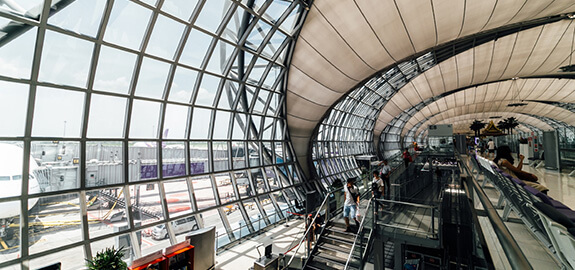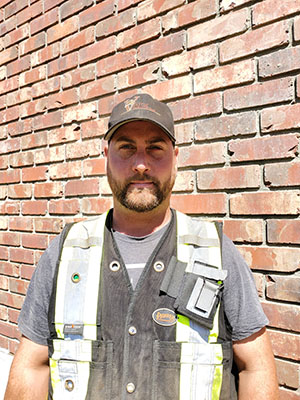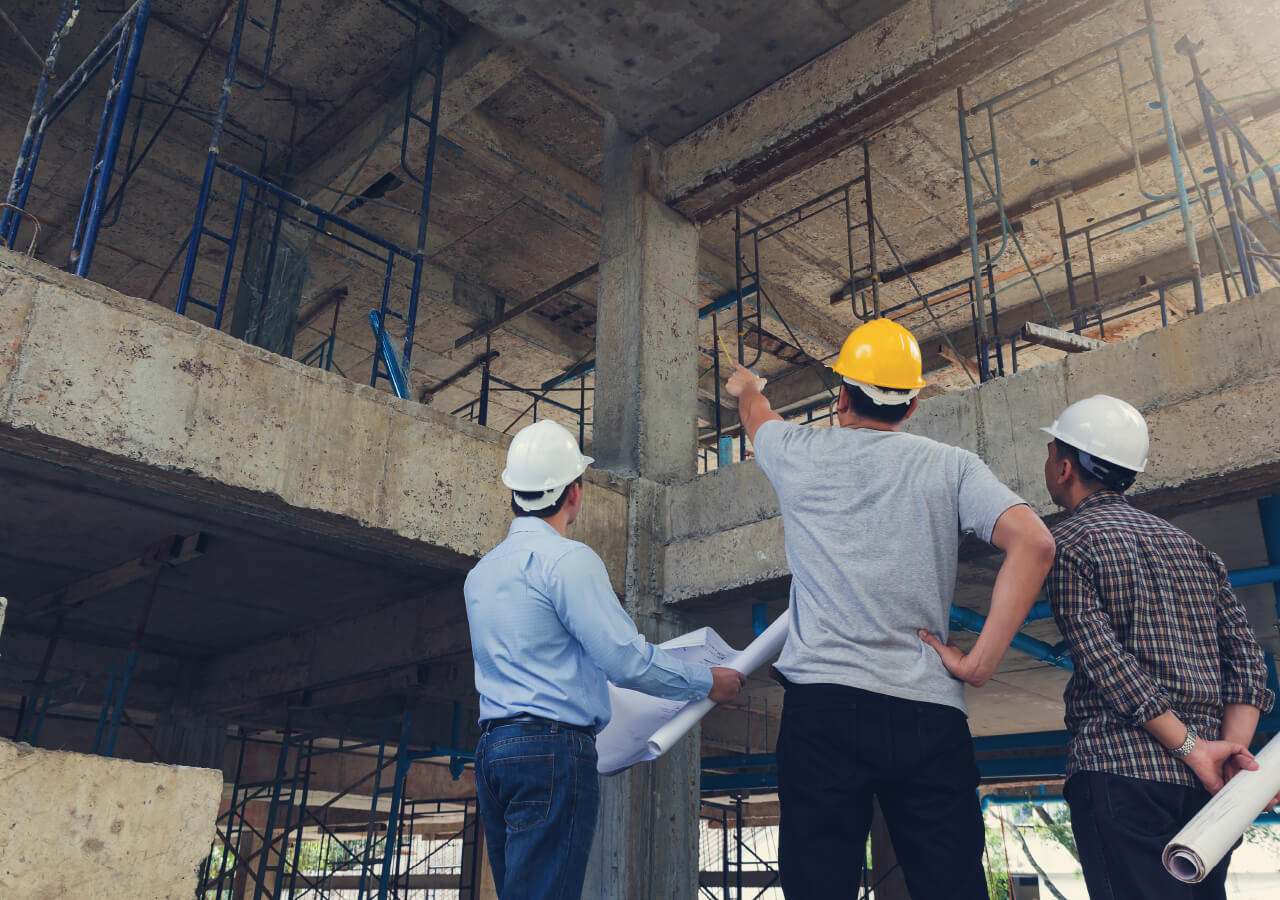Welcome to VIKING REINFORCING
Viking Reinforcing Ltd welcomes Amir Al-Badri!!
As 2023 draws to a close, it is our pleasure to introduce our newest team member Amir Al-Badri! It’s been another year of growth for Viking Reinforcing so we’re very excited to have Amir on board as Senior Project Manager for Vancouver Island. Amir earned his MSc Construction Management from Hariot Watt University (UK) Dubai Campus and has enjoyed nearly 20 years in the commercial construction industry. His knowledge and experience will be instrumental in and helping us streamline our processes so we can continue to maintain and exceed our high level of customer service excellence. Amir is in the process of relocating to Vancouver Island from Calgary and we’re looking forward to his contributions to Viking Reinforcing Ltd. We are excited to have Amir on board with us as we enter a new year 2024 poised for growth and shared business successes with our customers. Welcome on board Amir, we’re delighted you’ve joined our team!! Amir Al-Badri amir@vikingreinforcing.com
our history

Why Viking
When you work with Viking Reinforcing Ltd, you have a team behind you who is committed to the
project success, by getting the job done on time, with quality & discipline and a fantastic attitude!
Viking Reinforcing Ltd has fostered loyal and lasting partnerships with our customers and our team has
evolved and grown along with our successes. We have also established strong connections with our
suppliers, trades and other firms in the construction industry here on Vancouver Island.
We have the unique ability to combine excellence in both supply with the added value of high standards
of placing with a great team!
– Project Controls
– Safety / Quality Assurance
– Constructability Reviews
– Logistics Planning
– Procurement
– Project Controls
– Safety / Quality Assurance
– Constructability Reviews
– Logistics Planning
– Procurement
our works
featured portfolios
get started
We are at your service since 2007 with robust infrastructure carrying the future
about viking reinforcing
Viking develops innovative solutions to build critical infrastructure and landmark projects.
More info coming soon…
More info coming soon…



randy@vikingreinforcing.com

jeff@vikingreinforcing.com

chad@vikingreinforcing.com

doug@vikingreinforcing.com

suzanne@vikingreinforcing.com


sadie@vikingreinforcing.com

Project Management
amir@vikingreinforcing.comYears
Experience
35+
More info coming soon…
Reinforcing the Foundations of the Future!
More info coming soon…
get started
We are at your service since 2007 with robust infrastructure carrying the future
about rebar
A comprehensive definition
Use in concrete and masonry
some more information about rebar
Physical Characteristics
Rebar Sizes

Canadian metric sizes
Metric bar designations represent the nominal bar diameter in millimeters, rounded to the nearest 5 mm.| Metric Bar Size | Mass (kg/m) | Nominal Diameter (mm) | Cross-Sectional Area (mm²) |
| 10M | 0.785 | 11.3 | 100 |
| 15M | 1.570 | 16.0 | 200 |
| 20M | 2.355 | 19.5 | 300 |
| 25M | 3.925 | 25.2 | 500 |
| 30M | 5.495 | 29.9 | 700 |
| 35M | 7.850 | 35.7 | 1000 |
| 45M | 11.775 | 43.7 | 1500 |
| 55M | 19.625 | 56.4 | 2500 |
U.S. Imperial sizes
Imperial bar designations represent the bar diameter in fractions of 1/8 inch, such that #8 = 8/8 inch = 1 inch diameter. Area = (bar size/9)2 such that area of #8 = (8/9)2 = 0.79 in2. This applies to #8 bars and smaller. Larger bars have a slightly larger diameter than the one computed using the 1/8 inch convention| Imperial Bar Size | “Soft” Metric Size | Weight (lb/ft) | Weight (kg/m) | Nominal Diameter (in) | Nominal Diameter (mm) | Nominal Area (in²) | Nominal Area (mm²) |
| #3 | #10 | 0.376 | 0.561 | 0.375=3/8 | 9.525 | 0.11 | 71 |
| #4 | #13 | 0.668 | 0.996 | 0.500=4/8 | 12.7 | 0.20 | 129 |
| #5 | #16 | 1.043 | 1.556 | 0.625=5/8 | 15.875 | 0.31 | 200 |
| #6 | #19 | 1.502 | 2.24 | 0.750=6/8 | 19.05 | 0.44 | 284 |
| #7 | #22 | 2.044 | 3.049 | 0.875=7/8 | 22.225 | 0.60 | 387 |
| #8 | #25 | 2.670 | 3.982 | 1.000=8/8 | 25.4 | 0.79 | 509 |
| #9 | #29 | 3.400 | 5.071 | 1.128 | 28.65 | 1.00 | 645 |
| #10 | #32 | 4.303 | 6.418 | 1.270 | 32.26 | 1.27 | 819 |
| #11 | #36 | 5.313 | 7.924 | 1.410 | 35.81 | 1.56 | 1006 |
| #14 | #43 | 7.650 | 11.41 | 1.693 | 43 | 2.25 | 1452 |
| #18 | #57 | 13.60 | 20.284 | 2.257 | 57.33 | 4.00 | 2581 |
European metric sizes
Metric bar designations represent the nominal bar diameter in millimetres. Bars in Europe will be specified to comply with the standard EN 10080 (awaiting introduction as of early 2007), although various national standards still remain in force (e.g. BS 4449 in the United Kingdom).| Metric Bar Size | Mass (kg/m) | Nominal Diameter (mm) | Cross-Sectional Area (mm²) |
| 6,0 | 0.222 | 6 | 28.3 |
| 8,0 | 0.395 | 8 | 50.3 |
| 10,0 | 0.617 | 10 | 78.5 |
| 12,0 | 0.888 | 12 | 113 |
| 14,0 | 1.21 | 14 | 154 |
| 16,0 | 1.579 | 16 | 201 |
| 20,0 | 2.467 | 20 | 314 |
| 25,0 | 3.855 | 25 | 491 |
| 28,0 | 4.83 | 28 | 616 |
| 32,0 | 6.316 | 32 | 804 |
| 40,0 | 9.868 | 40 | 1257 |
| 50,0 | 15.413 | 50 | 1963 |
Rebar Grades
Develops innovative solutions to build critical infrastructure and landmark projects.
Rebar is available in different grades and specifications that vary in yield strength, ultimate tensile strength, chemical composition, and percentage of elongation.
The grade designation is equal to the minimum yield strength of the bar in ksi (1000 psi) for example grade 60 rebar has a minimum yield strength of 60 ksi. Rebar is typically manufactured in grades 40, 60, and 75.
Common specification are…
- ASTM A 615 Deformed and plain carbon-steel bars for concrete reinforcement
- ASTM A 706 Low-alloy steel deformed and plain bars for concrete reinforcement
- ASTM A 955 Deformed and plain stainless-steel bars for concrete reinforcement
- ASTM A 996 Rail-steel and axle-steel deformed bars for concrete reinforcement
Historically in Europe, rebar is composed of mild steel material with a yield strength of approximately 250 N/mm². Modern rebar is composed of high-yield steel, with a yield strength more typically 500 N/mm². Rebar can be supplied with various grades of ductility, with the more ductile steel capable of absorbing considerably greater energy when deformed – this can be of use in design to resist the forces from earthquakes for example.
see all portfolios
Placing Rebar
Develops innovative solutions to build critical infrastructure and landmark projects.
Rebar cages are fabricated either on or off the project site commonly with the help of hydraulic benders and shears, however for small or custom work a tool known as a Hickey – or hand rebar bender, is sufficient. The rebars are placed by rodbusters or concrete reinforcing ironworkers with bar supports separating the rebar from the concrete forms to establish concrete cover and ensure that proper embedment is achieved. The rebars in the cages are connected by welding or tying wires. For epoxy coated or galvanised rebars only the latter is possible.
Welding
Most grades of steel used in rebar are suitable for welding, which can be used to bind several pieces of rebar together. However, welding can reduce the fatigue life of the rebar, and as a result rebar cages are normally tied together with wire. Grade ASTM A706 is suitable for welding without damaging the properties of the steel. Besides fatigue concerns welding rebar has become less common in developed countries due to the high labor costs of certified welders. Steel for prestressed concrete may absolutely not be welded.
In the US, most rebar is not suitable for welding. ASTM A 616 & ASTM A 617 reinforcing are re-rolled rail steel & re-rolled rail axle steel with uncontrolled chemistry, phosphorous & carbon content. These are not suitable for welding. To weld rebar you must obtain a mill statement that the reinforcing is suitable for welding.
Rebar couplers
When welding or wire-tying rebar is impractical or uneconomical a mechanical connection or rebar coupler can be used to connect two or more bars together. These couplers are popular in precast concrete construction at the joints between members and to reduce rebar congestion in highly reinforced areas.
A full mechanical connection is achieved when the bars connected develop in tension or compression a minimum of 125% of the yield strength of the bar.
Safety
To prevent workers and / or pedestrians from accidentally impaling themselves, the protruding ends of steel rebar are often bent over or covered with special steel-reinforced plastic “plate” caps. “Mushroom” caps may provide protection from scratches and other minor injuries, but provide little to no protection from impalement.
get started
We are at your service since 2007 with robust infrastructure carrying the future
our Gallery
We are at your service since 2007 with robust infrastructure carrying the future
work with us
get started
We are at your service since 2007 with robust infrastructure carrying the future
Your career
More info coming soon…
get started
We are at your service since 2007 with robust infrastructure carrying the future
Videos of
Our Projects
We are working hard to show you some cool videos
More info coming soon…
NORTHFIELD APARTMENTS – NANAIMO BC – 2020
BERWICK HOMES – PARKSVILLE BC – 2020
More Project video tours coming soon!
...
get started
We are at your service since 2007 with robust infrastructure carrying the future
get in touch
contact us
More info coming soon…
phone
office address
1285 Springhill Road,
Parksville BC V9P 2T2
Office hours
8 AM – 4 PM
Mon – Fri
get started






